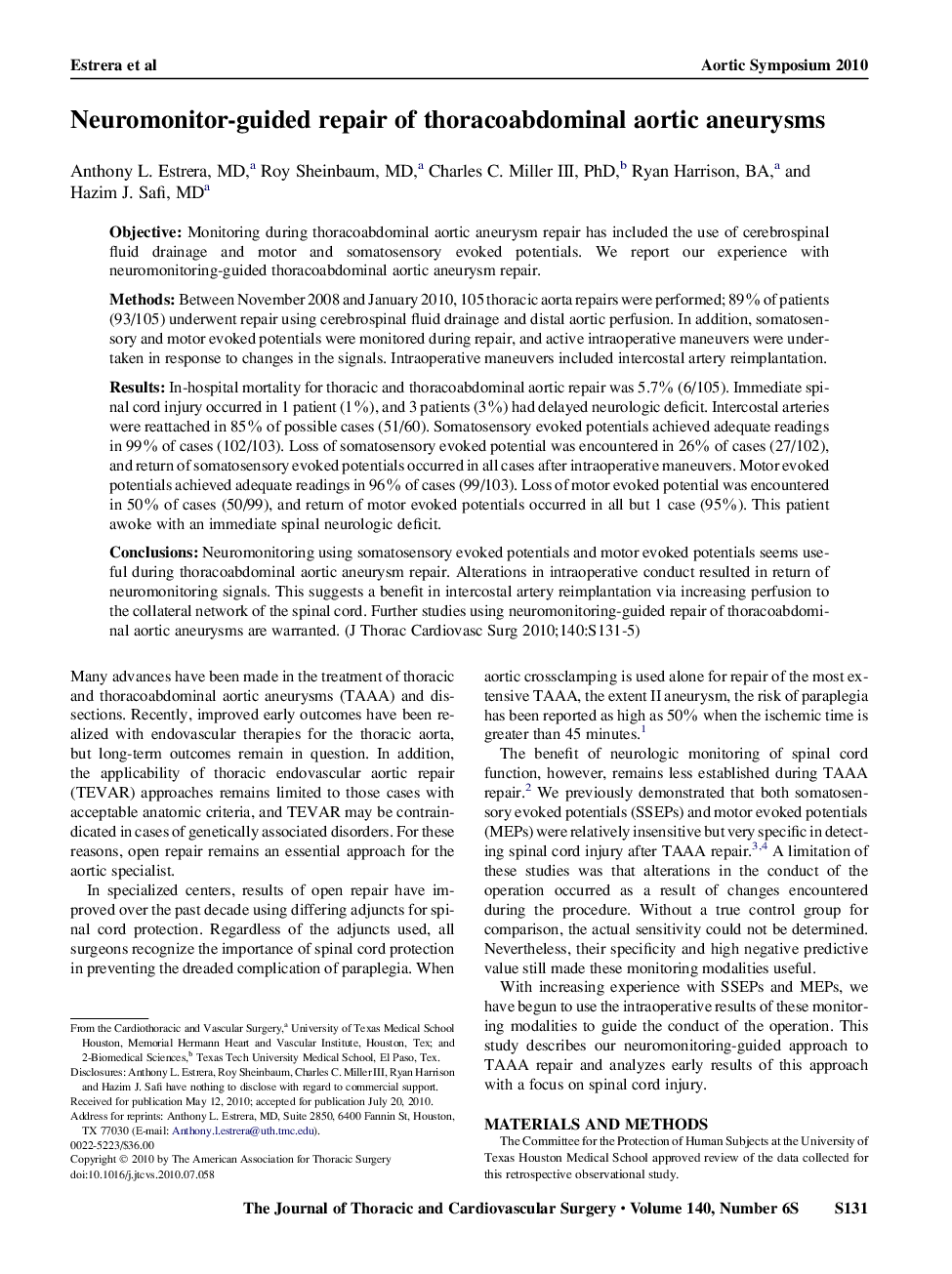| کد مقاله | کد نشریه | سال انتشار | مقاله انگلیسی | نسخه تمام متن |
|---|---|---|---|---|
| 2983629 | 1578655 | 2010 | 5 صفحه PDF | دانلود رایگان |

ObjectiveMonitoring during thoracoabdominal aortic aneurysm repair has included the use of cerebrospinal fluid drainage and motor and somatosensory evoked potentials. We report our experience with neuromonitoring-guided thoracoabdominal aortic aneurysm repair.MethodsBetween November 2008 and January 2010, 105 thoracic aorta repairs were performed; 89% of patients (93/105) underwent repair using cerebrospinal fluid drainage and distal aortic perfusion. In addition, somatosensory and motor evoked potentials were monitored during repair, and active intraoperative maneuvers were undertaken in response to changes in the signals. Intraoperative maneuvers included intercostal artery reimplantation.ResultsIn-hospital mortality for thoracic and thoracoabdominal aortic repair was 5.7% (6/105). Immediate spinal cord injury occurred in 1 patient (1%), and 3 patients (3%) had delayed neurologic deficit. Intercostal arteries were reattached in 85% of possible cases (51/60). Somatosensory evoked potentials achieved adequate readings in 99% of cases (102/103). Loss of somatosensory evoked potential was encountered in 26% of cases (27/102), and return of somatosensory evoked potentials occurred in all cases after intraoperative maneuvers. Motor evoked potentials achieved adequate readings in 96% of cases (99/103). Loss of motor evoked potential was encountered in 50% of cases (50/99), and return of motor evoked potentials occurred in all but 1 case (95%). This patient awoke with an immediate spinal neurologic deficit.ConclusionsNeuromonitoring using somatosensory evoked potentials and motor evoked potentials seems useful during thoracoabdominal aortic aneurysm repair. Alterations in intraoperative conduct resulted in return of neuromonitoring signals. This suggests a benefit in intercostal artery reimplantation via increasing perfusion to the collateral network of the spinal cord. Further studies using neuromonitoring-guided repair of thoracoabdominal aortic aneurysms are warranted.
Journal: The Journal of Thoracic and Cardiovascular Surgery - Volume 140, Issue 6, Supplement, December 2010, Pages S131–S135